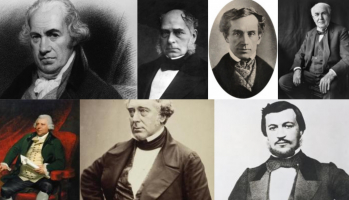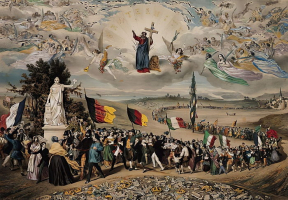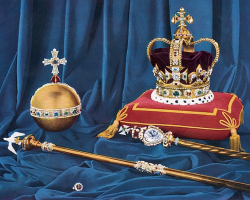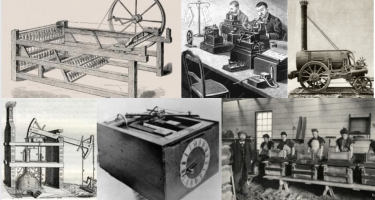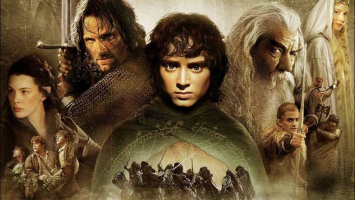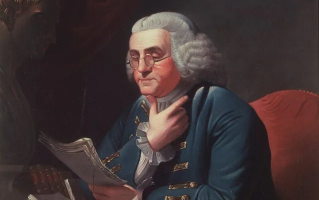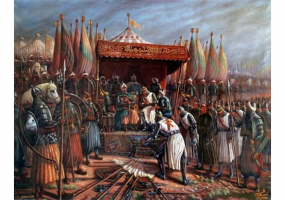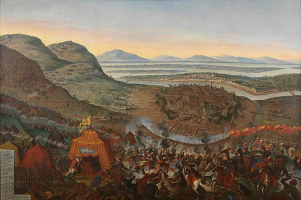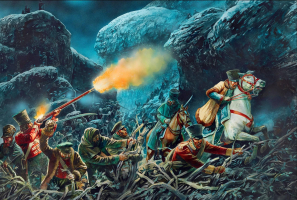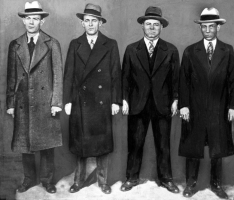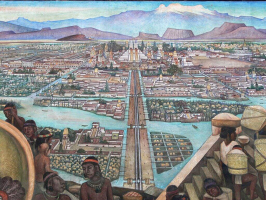Top 11 Arthurian Knights of the Round Table That Found the Holy Grail
The Round Table, which is said to be a purported concentric table where the valiant knights of the King gathered, is not just any old piece of furniture, ... read more...according to the Arthurian legends. It had no heads, suggesting that each knight at the table was on an equal footing with the others. Under this round marquee, the knights took on a collective persona of bravery and chivalry. Without deviating, we’d like to dive into the topic which is the Arthurian knights of the Round Table that found the Holy Grail.
-
One of the Arthurian knights of the Round Table that found the Holy Grail is Sir Galahad. He is known for his bravery and purity as the most faultless of all knights. He is the illegitimate son of Sir Lancelot du Lac and Lady Elaine of Corbenic. Sir Galahad entered the medieval Arthurian narrative relatively late. He initially appears in the Lancelot-Grail cycle, and later works like Sir Thomas Malory's Le Morte d'Arthur and the Post-Vulgate Cycle continue his story.
He defeats Lancelot in a duel with his father, earning his father's knighthood. Soon after, he is led to the Round Table and told to take the one vacant seat, which is the Siege Perilous reserved for the knight who successfully returned with the Holy Grail.
Additionally, it was said that Gallahad had a stone-forged sword with engravings proclaiming its owner to be the greatest person in the universe. King Arthur eventually realized how much Gallahad resembled him and proclaimed him the most ideal knight.
He was renowned for his bravery and was thought to have been destined from birth to be the Holy Grail's hunter. He was without a doubt the greatest and most exceptional knight who outperformed his father and did not perish during the journey like the other knights.
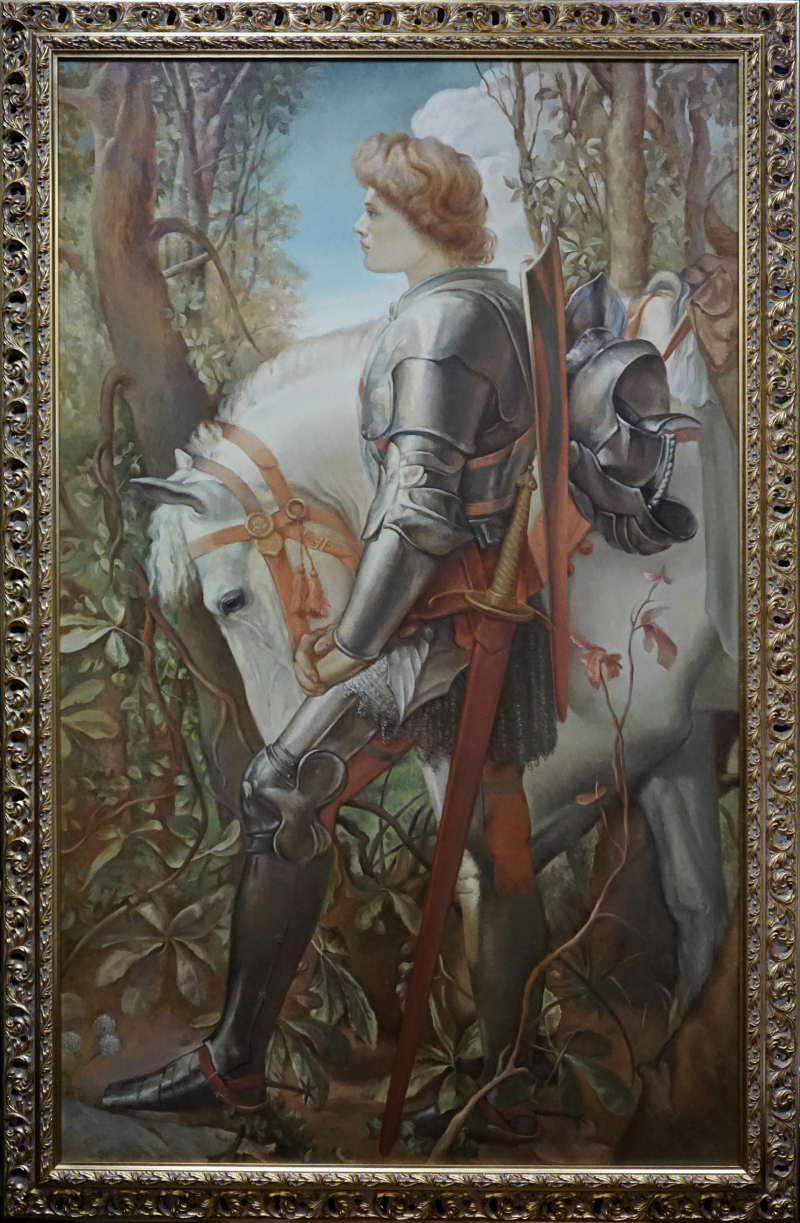
Photo: Florida Center for Instructional Technology - University of South Florida - Sir Galahad 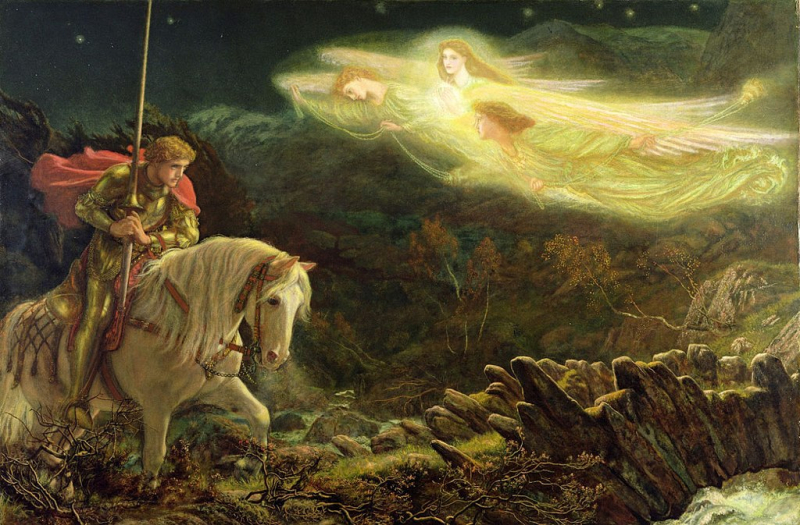
Photo: Wikimedia Commons - Sir Galahad -
Some Arthurian legends include Lancelot du Lac as a figure. He is frequently portrayed as King Arthur's close friend and as one of the greatest Knights of the Round Table. According to the French-inspired Arthurian chivalric romance tradition, Lancelot was reared in the fairy realm by the Lady of the Lake as an orphaned child of King Ban of the extinct Kingdom of Benwick. Lancelot becomes the lord of the castle Joyous Gard and Queen Guinevere's personal champion after serving as a hero in numerous conflicts, expeditions, and tournaments and earning a reputation as an almost unmatched swordsman and jouster. However, Mordred utilizes the civil war that results from his adulterous relationship with Guinevere to overthrow Arthur's kingdom.
In the 12th-century poem Lancelot, the Knight of the Cart by Chrétien de Troyes, he makes his first major appearance. Later, his character was developed in other Arthurian romance novels, particularly the expansive Lancelot-Grail prose cycle, which offered the now-famous version of his legend after Le Morte d'Arthur's retelling of it. There, Galahad, the son of Lancelot and Lady Elaine, succeeds in completing the greatest of all adventures by obtaining the Holy Grail after Lancelot himself fails due to his faults. Galahad lacks his father's character flaws and grows up to be the ideal knight.
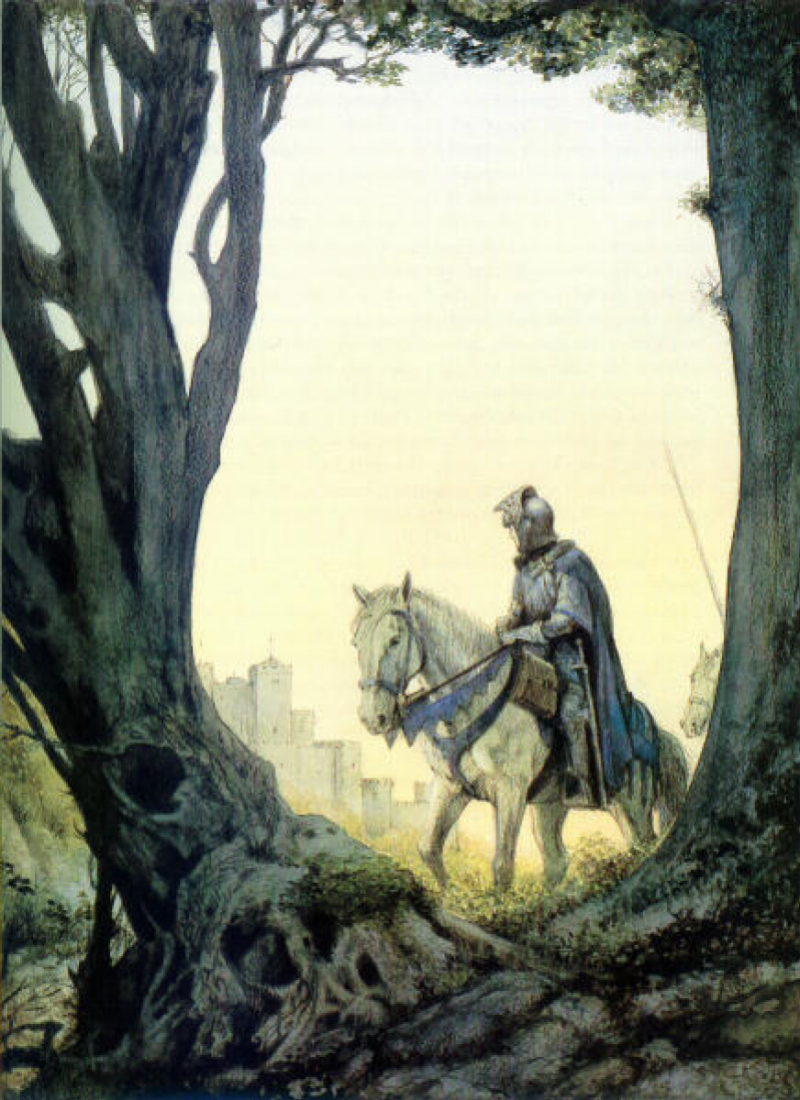
Photo: Arthive - Sir Lancelot by Julek Heller 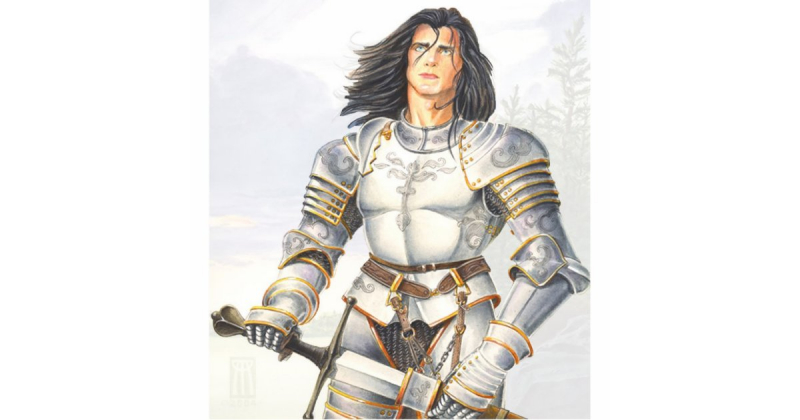
Photo: Zazzle - Sir Lancelot -
King Arthur's nephew and a Knight of the Round Table, Gawain is a figure from Arthurian legend. The earliest Welsh literature refers to Gwalchmei, the prototype of Gawain. Following that, he made numerous appearances in Arthurian tales written in Welsh, Latin, French, English, Scottish, Dutch, German, Spanish, and Italian. He is perhaps best known for serving as the main character in the renowned Middle English poem Sir Gawain and the Green Knight.
Gawain is frequently portrayed as King Arthur's closest comrade and a crucial part of the exclusive Round Table in Arthurian chivalric romance literature. He is the son of King Lot of Orkney and Lothian and Morgause, the sister of King Arthur. These are the most popular versions of the legend. His younger siblings (or half-brothers) include the notorious Mordred, Agravain, Gaheris, and Gareth. However, different reports give differing accounts of his family relationships and upbringing. They frequently depict Gawain returning to Britain to cheerfully rejoin with his biological relatives after unwittingly been raised in foster care in Rome. The "Fair Unknown" Gingalain, one of his many children from his multiple wives and lovers, is also a well-known figure in Arthurian romance.
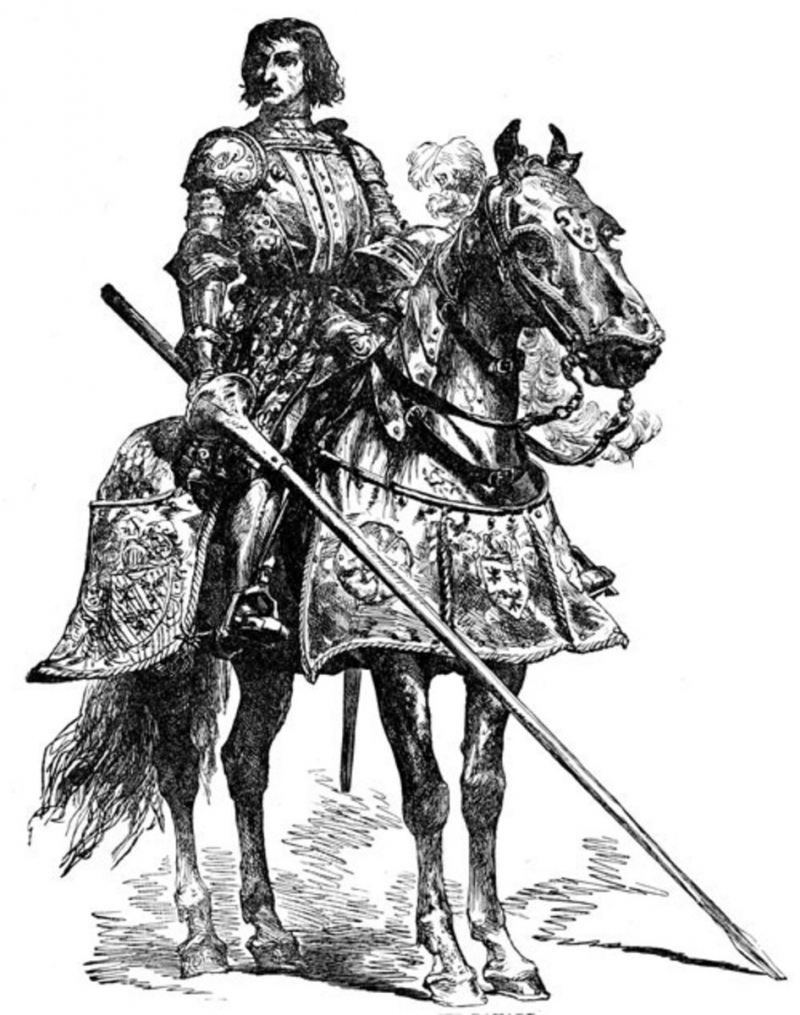
Photo: Owlcation - Sir Gawain Video: Sir Gawain and the Green Knight Video Summary -
One of the well-known characters in Chretien de Troyes' tale "Perceval, the Story of the Grail" is Sir Percival. The works "Parzival" by Wolfram von Eschenbach and "Perceval" by Robert de Boron are two examples of alternative versions.
He is characterized as a shy youngster raised by a single mother in the Arthurian Legend. He once caught sight of some males heading toward the court. He decides to join them after becoming enchanted by their armor and suit. After a string of bad incidents, he becomes consumed with retaliation for his family's murder and is heralded as a hero.
The King appointed him to the Round Table and knighted him after observing his admirable behavior. He is referred to as the principal protagonist of the Grail quest in several other narratives. But once this adventure is over, his influence has slightly diminished. As a result, Perceval was one of the most illustrious and distinguished knights in history.
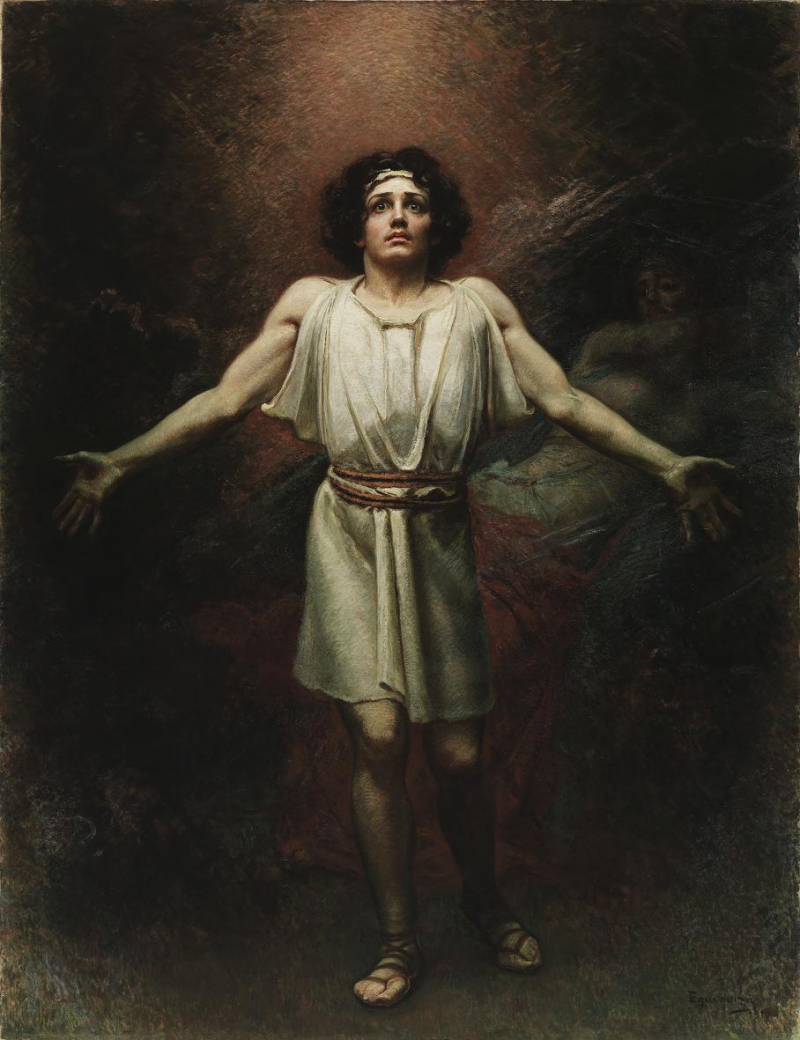
Photo: Wikipedia - Percival 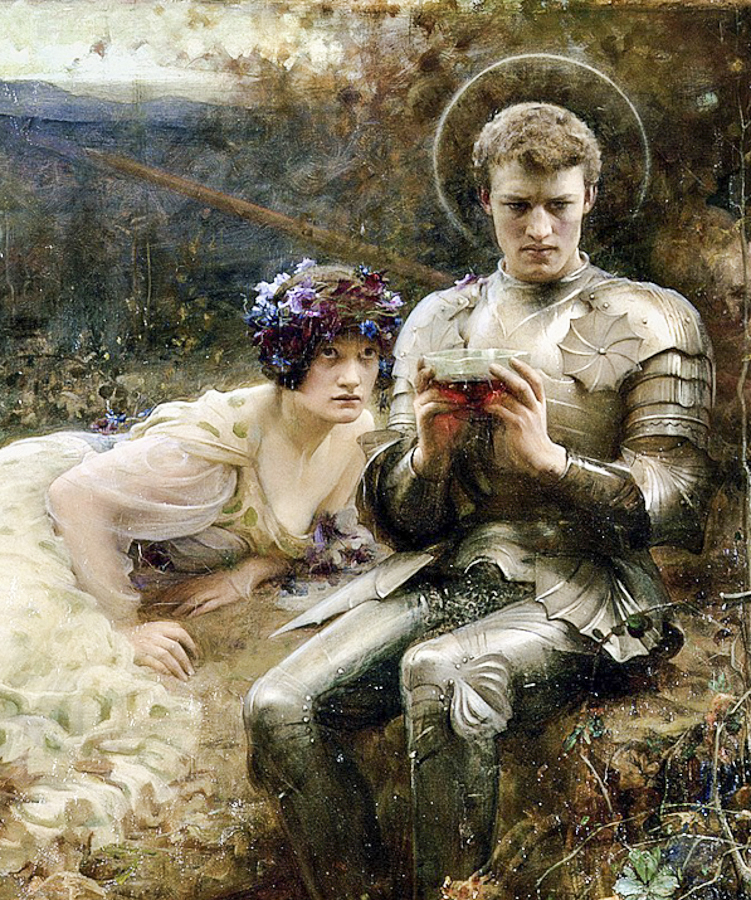
Photo: The Epoch Times - Temptation of Sir Percival -
The protagonist of the Tristan and Iseult mythology is Tristan. The Irish princess Iseult is to be escorted by him to marry Tristan's uncle, King Mark of Cornwall, according to the mythology. While traveling, Tristan and Iseult unintentionally ingest a love potion and fall in love. This starts an illicit romance that ultimately results in Tristan's exile and death. The character first appears in writing in the Prose Tristan and retellings of British legend by Thomas of Britain and Gottfried von Strasburg from the 12th century. He appears in Arthurian legends as a competent knight and Lancelot's buddy, notably the ground-breaking book Le Morte d'Arthur.
Tristan's origins in history are unknown, however his connection to Cornwall may be due to the Tristan Stone, a granite pillar in Cornwall from the sixth century bearing the name Drustanus (a variant of Tristan). Numerous historical and contemporary works of literature, music, and film have featured him. Tristan is portrayed as a tragic love figure in Richard Wagner's Tristan und Isolde, a significant opera from the 19th century.
Iseult captures Tristan's attention, and the two fall head over heels in love. According to legend, there was a love triangle between them, with Sir Palomedes, a fellow Knight of the Round Table who was also smitten with Iseult in Ireland, completing the set.
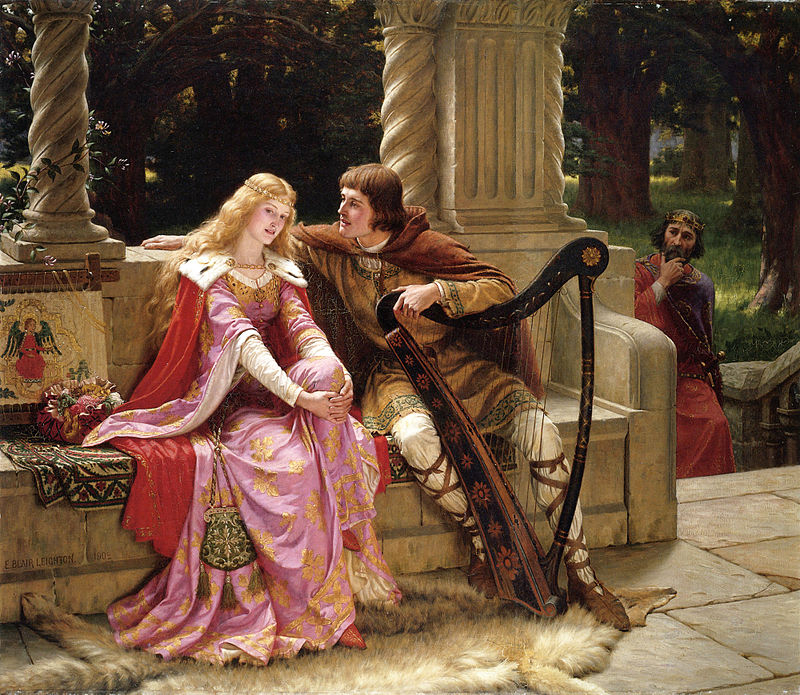
Photo: Google Sites - Sir Tristan 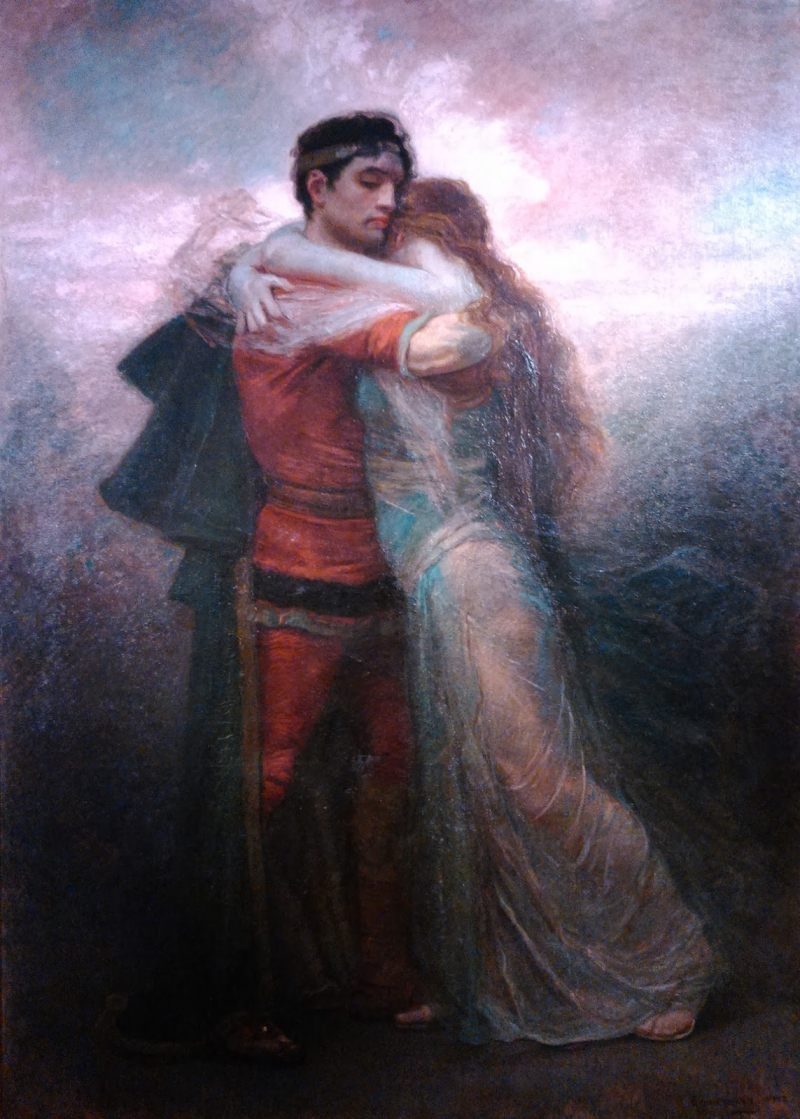
Photo: Wikipedia - Tristan -
In the stories of King Arthur, Sir Gareth is a member of the Round Table. He is the youngest child of King Lot and Queen Morgause, King Arthur's half-sister, and as such, he is Arthur's nephew. He is also the brother of Gawain, Agravain, Gaheris, and perhaps Mordred's brother or half-brother. Gareth is most noteworthy in Le Morte d'Arthur, when he also goes by the moniker Beaumains.
Sir Gareth was born with royal blood. He appeared as a figure in Malory's seventh book and was given his own chapter, "The Tale of Sir Gareth and Orkney," in which he recounted how he became a knight.
He initially entered the royal kitchen undetected as a layman, a fair child with no known identity or history. Sir Kay, the same person who made fun of him and called him "Good Hands" or "Beaumains," hired him. Then, in the course of events, he is discovered saving Lyonesse, wed to her, and winning the Red Land conflict alongside vivid Knights and other characters. While ruthlessly defeating other knights, he saved their lives in exchange for a lifelong vow of service to King Arthur. This incident illustrates his devotion to the King and his unflinching character.
Sir Gareth was a traditional hero, and even in contemporary plays and movies, he continues to play a significant role.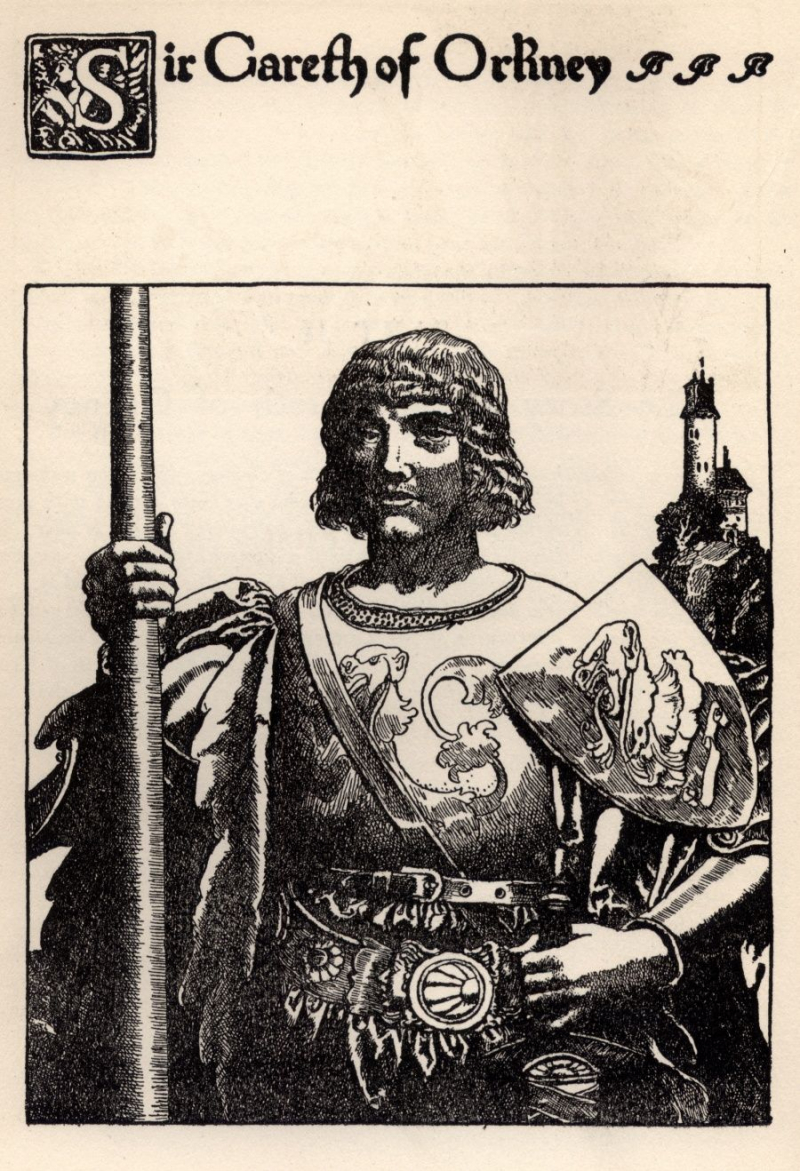
Photo: Pinterest - Sir Gareth of Orkney 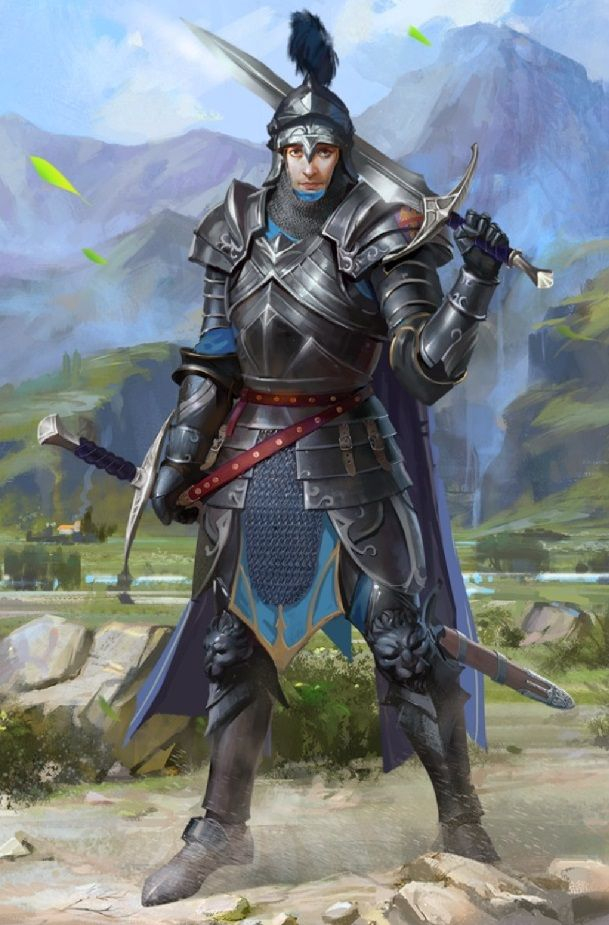
Photo: Pinterest - Sir Gareth -
One of the first members to join the organization Round Table was Sir Bedivere. According to legend, the name Bedivere is Welsh for "of the Perfect Sinews," or Bedwyr. Bedivere is portrayed in Arthurian chivalric romances as a Knight of the Round Table of King Arthur who serves as Arthur's marshal and is frequently linked to his brother Lucan, his cousin Griflet, as well as Kay. These romances were inspired by his portrayal in the chronicle Historia Regum Britanniae. In the English translations, Bedivere prominently fills Griflet's former role as the person who ultimately gives Excalibur to the Lady of the Lake following Arthur's final battle in French tales.
He is regarded as the most attractive warrior in the royal court, as it is seen in the story of "Culhwch and Olwen." He was described as very strong and almost bionic. Being an amputee, he was amazingly quick considering he only had one hand. Geoffrey of Monmouth appointed him the chief butler and Duke of Normandy for these and many other reasons. He is also renowned for being the King's steadfast ally from the start to the finish of his rule. His most well-known legends are those from the King's death, when he requested that Sir Bedivere cast the Excalibur into the lake. He was one of the few survivors of the Final Battle, although he eventually passed away during the Roman war.
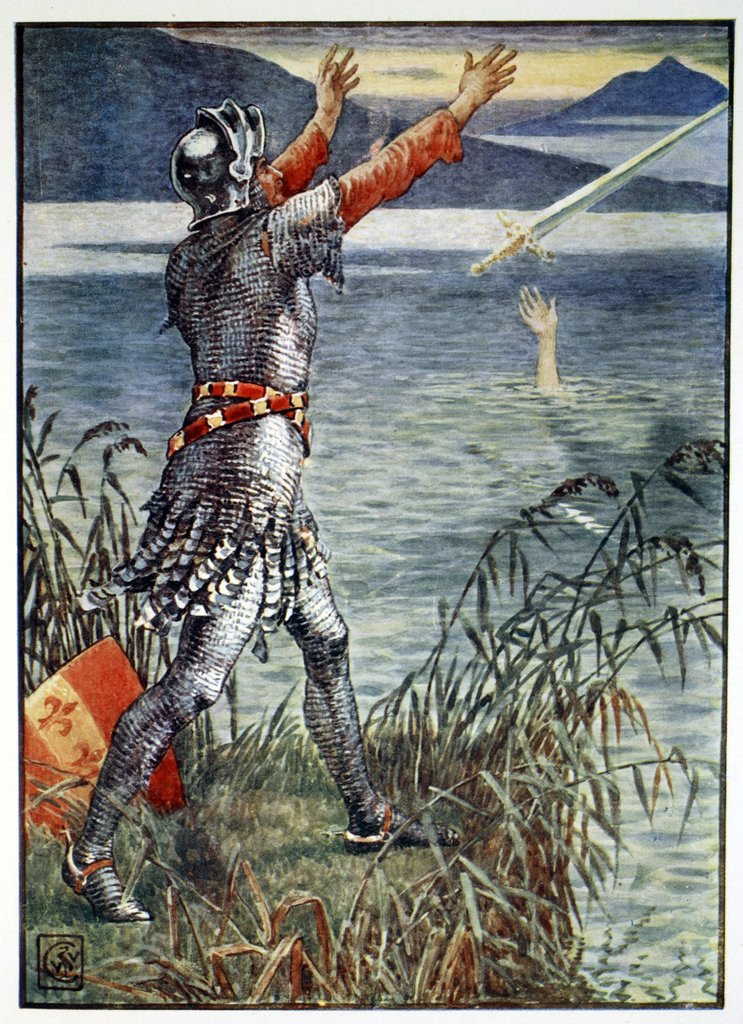
Photo: Wikipedia - King Arthur Sir Bedivere throwing Excalibur into the lake 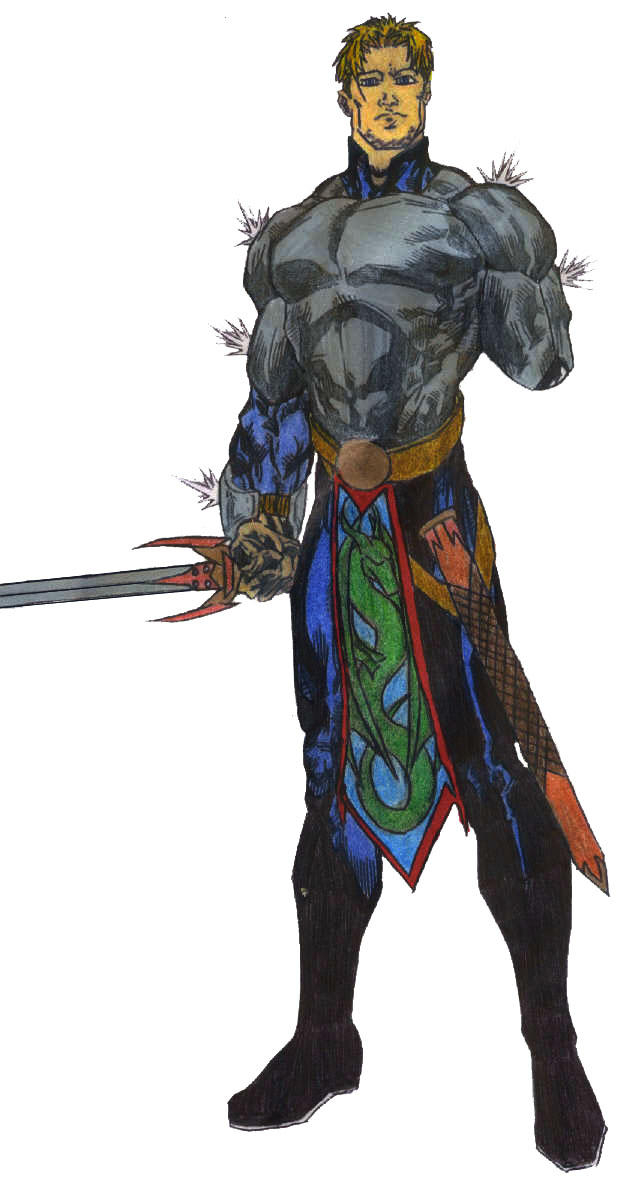
Photo: DeviantArt - Sir Bedivere by celticknight -
Next, One of the Arthurian knights of the Round Table that found the Holy Grail is Sir Bleoberis de Gannes. Sir Bleoberis was the cousin of Lancelot, the godson of King Bors, and the son of Prince Nestor of Gannes. Chretien de Troyes was the first to give him a name, possibly based on the 12-century storyteller Bleheris.
The King immediately appointed him a Knight of the Round Table after he served as the flag bearer in the Battle of Bedegraine. He participated in a number of conflicts before setting off on the quest to locate the Holy Grail, such as the conflicts with the Saxons and Agrippa and Claudas. His competence and dexterity are attested to by the fact that he was one of the few survivors at the battle of Salisbury (Mordred's rebellious war). He was the one who brutally dismembered Mordred during the battle by tying him to a horse. Along with Lancelot, he had also helped save Guenevere, and he had defended the two of them when they were accused of betraying one another.
Later, he was made Duke of Poitiers, and in his final days, the valiant knight retired to a hermitage alongside Lancelot.
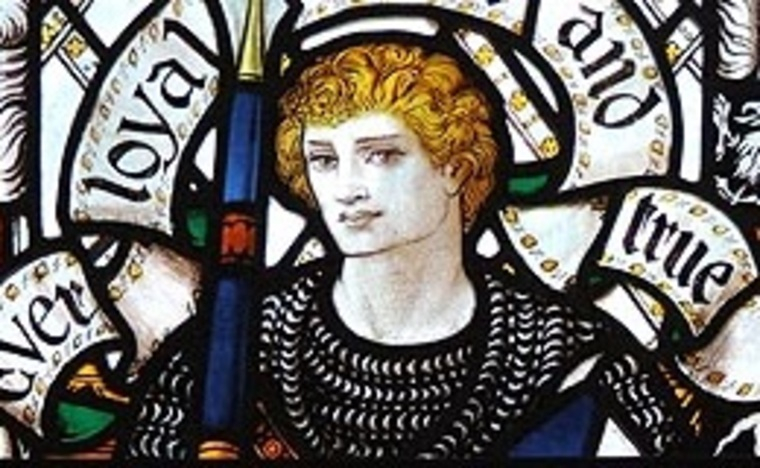
Photo: Early British Kingdoms - Sir Bors de Gannes 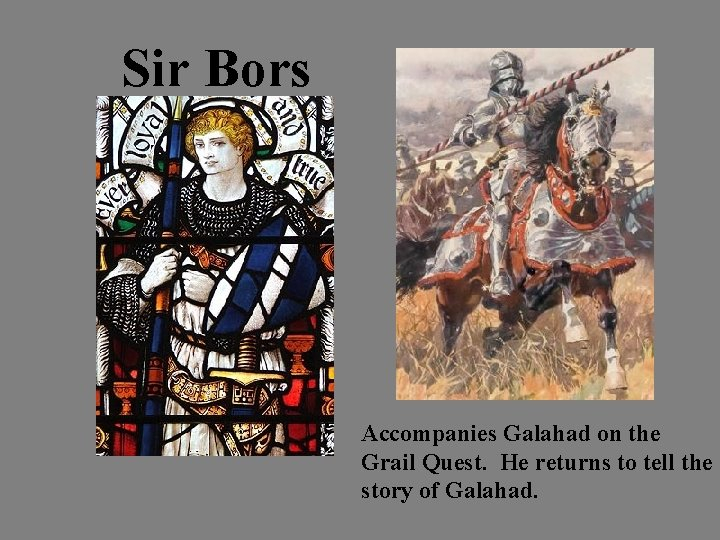
Photo: SlideToDoc.com -
Different spellings of the name ascribed to a number of different figures in the Arthurian tale are Brunor, Breunor, Branor, or Brunero. They include the father of Galehaut, another former member of Uther's old Round Table, and the Knight of the Round Table known as Brunner/Breunor le Noir (the Black).
One of the three sons of Sir Brunor Senior, well known as the Good Knight without Fear, was Sir Brunor. He was angry with the Knight of the Lake shortly after his father was killed and his brother was hacked by Sir Lancelot. So, wearing a coat made of his father's corpse, he set out on his trek to Camelot. Even though it was an uncomfortable fit, Sir Brunor vowed to wear it until he had exacted his retribution.
Sir Kay exclaimed, "La Cote Mal Tailliee," or the Knight of the Ill-Fitting Coat, as he entered the Royal court. He was made fun of, which hurt his chances of receiving a knighthood from the King. And that's what occurred. He was turned down and departed the location out of spite. The only time Sir Gawain was called back was after he argued. Unfortunately, he and the other knights suffered yet another defeat.Since then, he has been on many adventures before being knighted.
Video: Slandered Gaming - Sir Brunor le Noir Full Abilities Breakdown 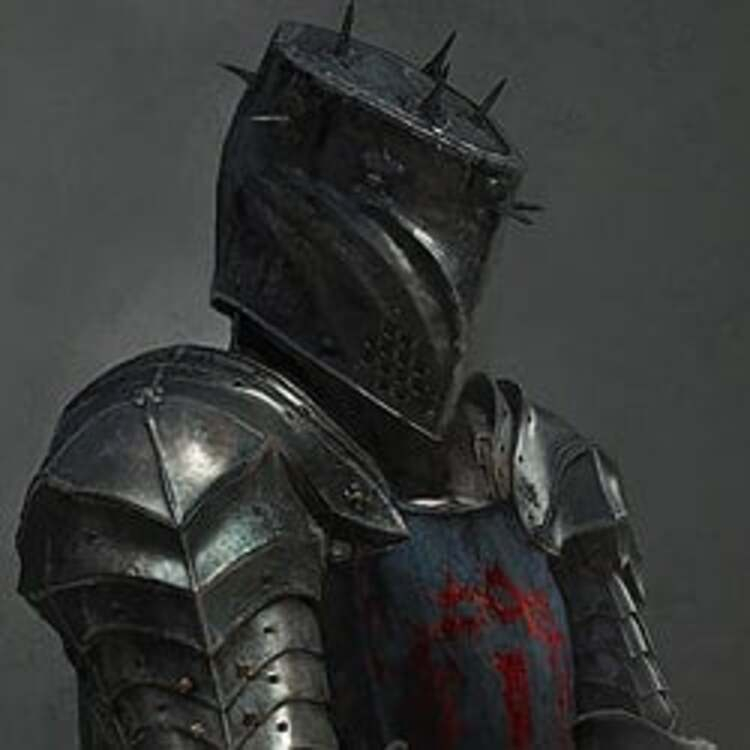
Photo: King Arthur Knights Tale Wiki - Fextralife - Sir Brunor le Noir -
One of the most trustworthy knights to have descended the table was Sir Lucan, son of Duke Cornelius, also known as Sir Lucan the Butler. Even though he was known as the butler, he was given more responsibility than only serving as a steward for the royal household. At the Battle of Bedegraine and in the ensuing rebellions, he had also fought for King Arthur's reign. Even during the conflicts between King Arthur and Lancelot, he had remained a dependable companion.
Similar to how he had displayed unmatched valor in the Battle of Camlann during the rebellion of Mordred, when he and his brother Bedivere fought tenaciously although blind to their wounds. He and his brother attempted to save the King when he was in critical condition by bringing him to a church. Sir Lucan reached his limit at that point and passed away. He was a brave and devoted knight.
Video: Fantasy & World Music by the Fiechters 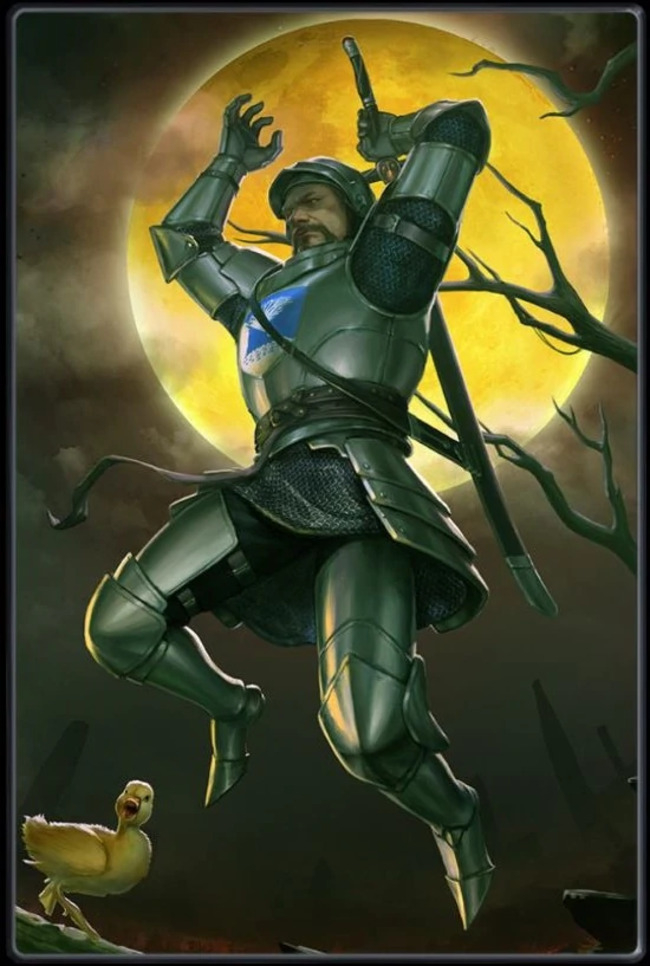
Photo: Marc's Story of King Arthur Wiki - Fandom - Sir Lucan -
In the legend of King Arthur, Palamedes served as a Knight of the Round Table. He is a pagan from the Middle East who subsequently becomes a Christian, and because of his unrequited love for Iseult, he frequently fights with Tristan. Safir, Segwarides, and King Esclabor, Palamedes' father, also join the Round Table. After him, a romance was given the name Palamedes.
According to mythology, Sir Palamedes was not introduced in the Arthurian legends until 'Tristan en prose' or Prose Tristan was derived from Tristan and Iseult. According to legend, he and Tristan were the two men vying for Princess Iseult's hand in marriage in Ireland.
Iseult is delighted when Palomares puts on a strong show and triumphs over her. Tristan gave him the choice of stopping his collection of weapons or staying with Iseult, though. Later, he joins the Round Table and engages Tristan in an ongoing conflict that has no clear victor. He is also known as "Palamedes," the hero of another narrative that bears his name.
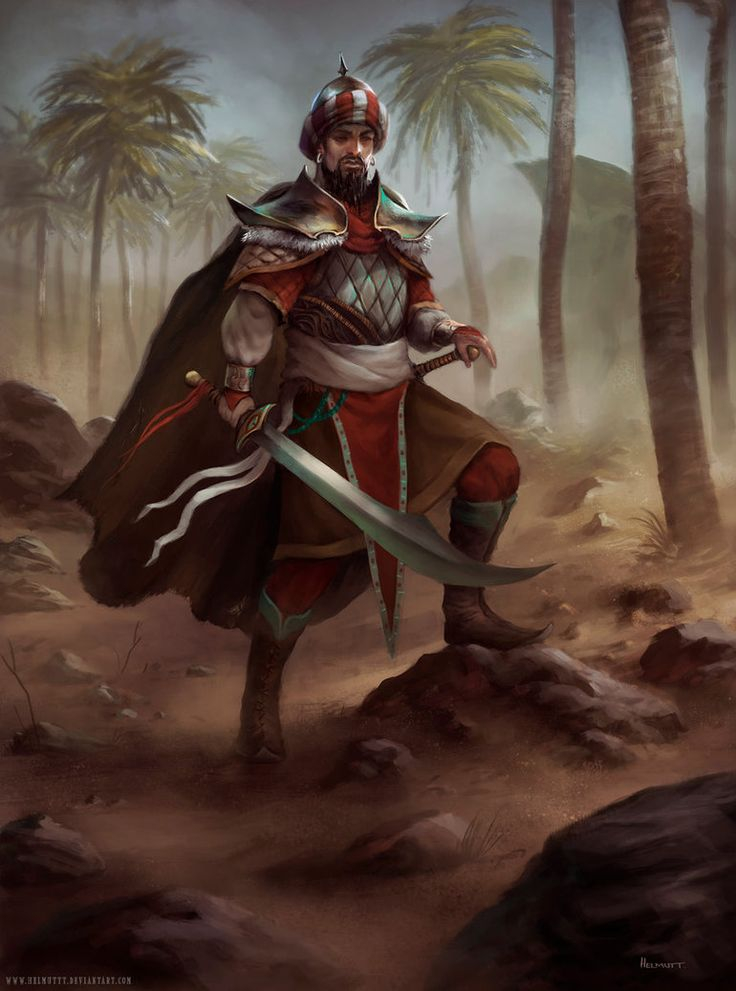
Photo: Pinterest - Sir Palomedes Video: Sir Palamedes














